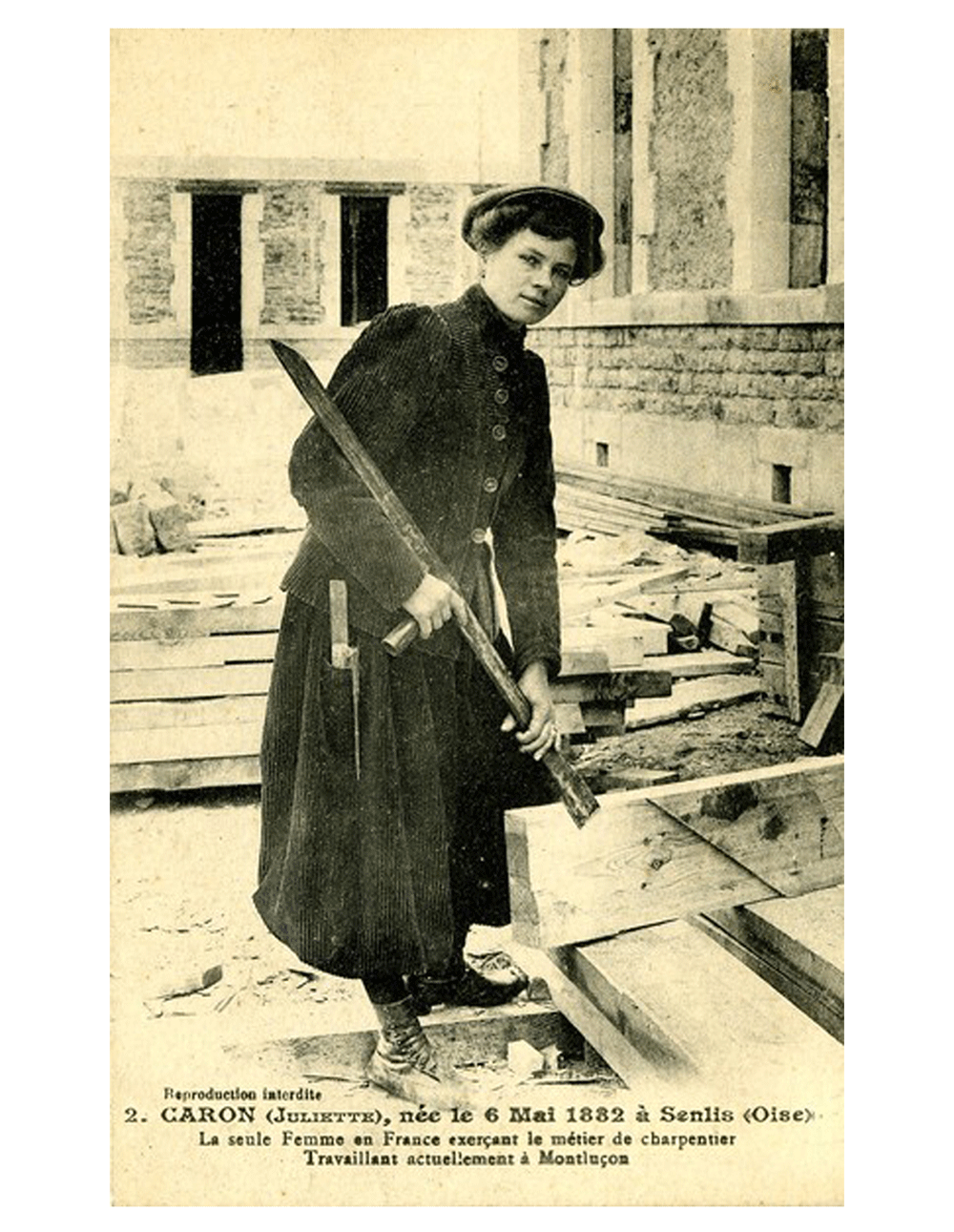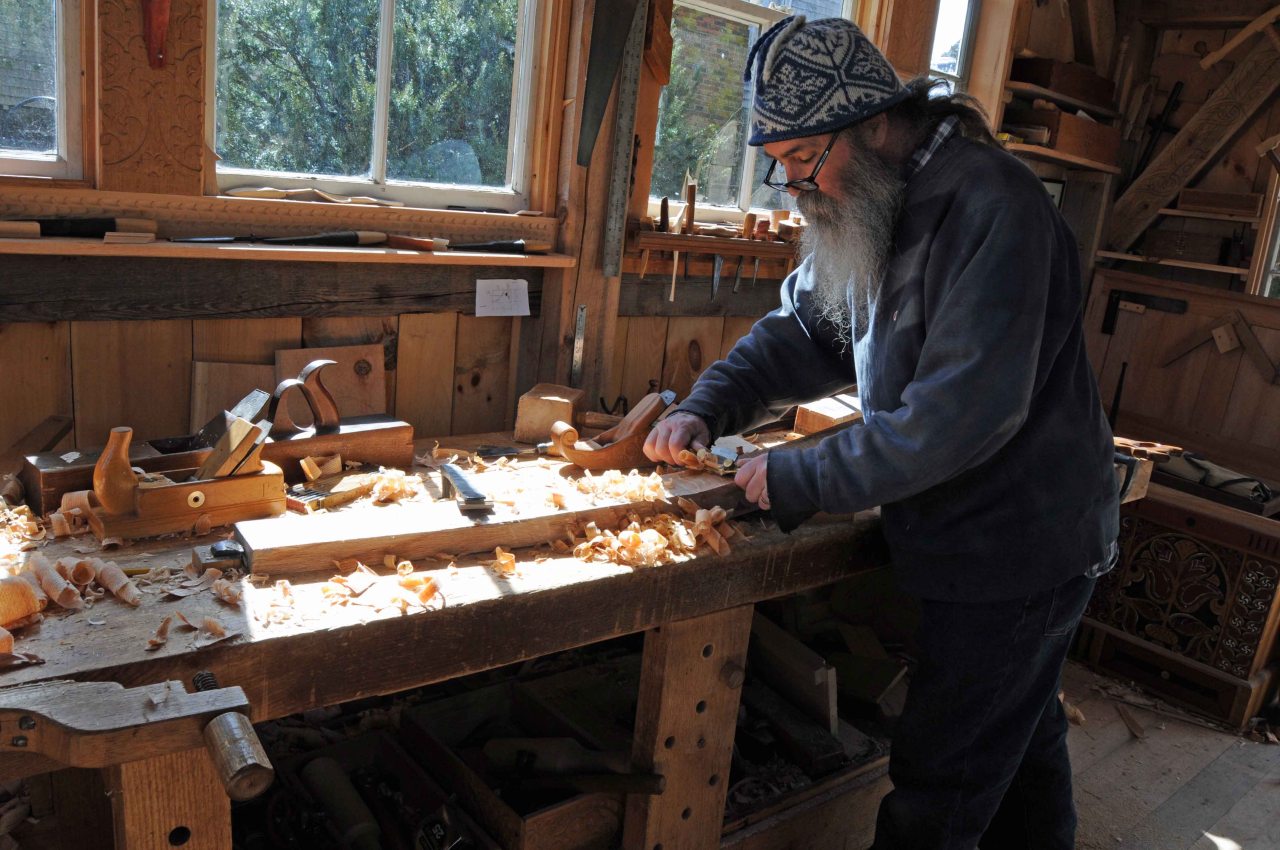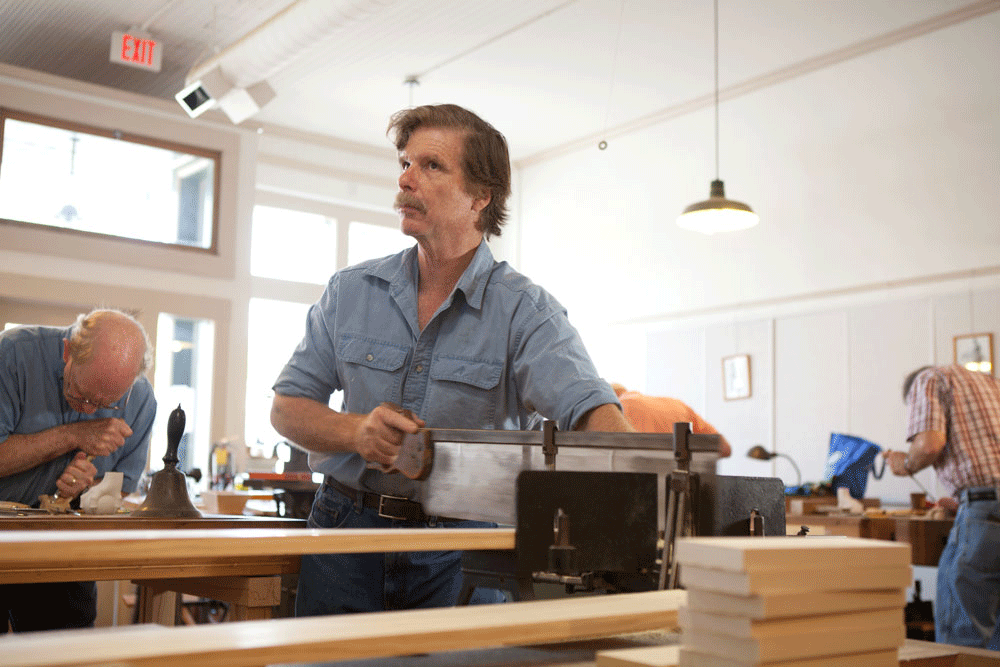We may receive a commission when you use our affiliate links. However, this does not impact our recommendations.

Juliette Caron, the first female compagnon carpenter in France. I wish I knew more about her, but I think about what she accomplished all the time.
It’s the easiest question in the world: Who is your favorite woodworker? A fellow craftsman asked me this question earlier this month, and I still don’t have a good answer.
I have one easy answer: Dead woodworkers. Charles H. Hayward is my No. 1 hero. He was everything I have ever wanted to be: A traditionally trained woodworker, a talented writer, illustrator, editor, photographer and builder. He put out The Woodworker magazine in the United Kingdom almost single-handedly for more than 30 years. His books and articles are the foundation of any good library on handwork in the 20th century.
But it’s easy to admire people who have passed on because they are not around to remind you that they are human and have foibles.
So (oddly, perhaps) I’ll praise another woodworker who has ventured to the Great Beyond: John Brown. His magazine columns and his later chair designs changed the course of my life. They inspired me in the 1990s to seek out chairmaking courses, and those led to my ongoing obsession with chairs and compound angles. John Brown is also one of the most explosive woodworking writers who ever lived. His columns in Good Woodworking magazine in the 1990s excited, angered and inspired a generation of woodworkers. And there has yet to be another person like him.
I never met Hayward, and likewise I never met John Brown, who died in 2008. So John Brown’s legacy is somewhat fixed in amber. That makes his career easy to understand and appreciate. It has a beginning, middle and end.
What about living woodworkers?
Peter Follansbee
I have to start with Peter Follansbee. His work is nothing like mine. In fact, he has little regard for what I build, and he regularly chides me for my ugly campaign chests and the like. I love it.
Peter is, in my mind, the most honest craftsman I know. He approaches his 17th-century-style work with zero romanticism. He refuses to overlay 20th-century values on this early style of work. He declines to employ modern tools (or ideas) on the things he builds.
Why? Is he a period kook? I don’t think so. I suspect he knows that using modern tools will make the 17th-century work look plain wrong. And therefore false.
After years of looking at his work I adore how lively the carving is. How bright the colors are. How energetic every aspect of the construction is. I say “energetic” when some people might say “loose” or “sloppy.” I don’t think that’s a fair assessment. The original makers were up against constraints many moderns cannot begin to understand. They were doing the best work they could with the available tools, materials and time constraints. Just like us.
Most of all, I love how shocking Peter’s work is to our expectations of “old stuff.” Fresh from the tools, Peter’s work is not what most people expect. It is bright and is a jumble of geometry, light and shadow that we are not prepared to process. We expect it to be dark brown and glum. It isn’t.
Peter’s furniture changed how I look at old furniture. And that was a gift.
Roy Underhill
Tied with Peter is Roy Underhill. It’s easy to like Roy because he’s immensely entertaining as a teacher and the host of the now-dormant “The Woodwright’s Shop” on PBS. But that’s not why I admire Roy.
When most people meet him, they think: What a funny guy! What a clown! What a rube!
Roy is like Columbo or Andy Griffith’s character on “Matlock.” He is easy to underestimate. He pretends to know little about a topic when he brings guests onto his television show. But it’s a smokescreen. Roy almost always knows more than the guest, and he uses his feigned ignorance to goad the guest into explaining things at a basic level for the audience.
Truth: Roy reads Ancient French. He is incredibly talented at all aspects of furniture construction, from mouldings to window-making to casework to timber framing and even felling trees. He simply refuses to let us see his incredible grasp of woodworking history and technique. After working with Roy a lot, I’ve seen his talents first-hand time and again.
Why does he conceal his superpowers? I can’t say. Maybe he thinks that no one likes a know-it-all. In any case, if you ever hear someone criticize Roy, you can be dang sure that the critic has never met Roy.
Contemporary Styles?
My personal work is an odd combination of traditional vernacular forms that have been boiled down to their essential components. The result can look very contemporary, and so I keep a foot planted firmly in the past and the future.
As a result, I adore people who manage the same feat of legerdemain. Here is a short list.
Jögge Sundqvist – a Swedish worker in the slojd tradition. His work, like Peter Follansbee’s, points out the folly of our expectations of traditional work. It is not always dark, heavy and boring. In fact, it is many times the opposite.
D.H. Phillips – This Dallas woodworker trained at the North Bennet Street school, the keeper of the flame for 18th-century traditional furniture. But Dan looks at furniture with such a curious, steady and contemporary eye, that I simply rage with jealousy when I see his work.
Sarah Marriage – A graduate of the College of the Redwoods, Sarah’s grasp of geometry is terrifying. That’s a weird word to describe someone’s work you adore, but it’s the right one. Take a look at her work, particularly the piece called “Feint,” and you will see that her flawless work has the power to control our perception of space. I’ve seen “Feint” in person and it is approachable and weird.
Christopher Williams – Welshman Chris worked with John Brown for a decade and has helped push the Welsh stick chair form into the present day. Chris’s craftsmanship is impeccable. His appreciation for tradition guides his techniques, which focus on minimal tooling. And yet his work looks like it comes from tomorrow. Few people can do that (well). Chris does it extremely well.
Laura Mays – Laura Mays is the director of The Krenov School School of Fine Furniture. Both she and her work are simply bada$$. I get lost in her website (link above), and I marvel at her productivity, her designs and her innate skill. Like Laura, I have appreciation for both vernacular forms and contemporary expressions of them. But she does things 10 times better than I could ever dream of.
I could go on with this list for a while. But I think it’s a healthy practice to seek out your own heroes. It’s easy to get sucked into our own workshops and focus on the bits of wood on our workbenches – rejecting the wider world around us. Try to actively look for work you admire – from the living or the dead – and gaze at it longingly and often. Let it trickle through your tissues until it is embedded in your membranes and helps you look at your own work in a new light.
That’s not imitation. It’s not a slavish embrace of old ways. Or a rejection of them. That’s simply progress – the same thing that great woodworkers have been doing for centuries.
— Christopher Schwarz
Here are some supplies and tools we find essential in our everyday work around the shop. We may receive a commission from sales referred by our links; however, we have carefully selected these products for their usefulness and quality.











Great article! I’m not surprised that a number of chair makers are on your list. I’ve been making Windsor chairs for almost 20 years and have a long way to go to achieve the craftsmanship Peter Galbert (https://www.petergalbert.com).
Tony Peirce (https://windsorheritage.com)